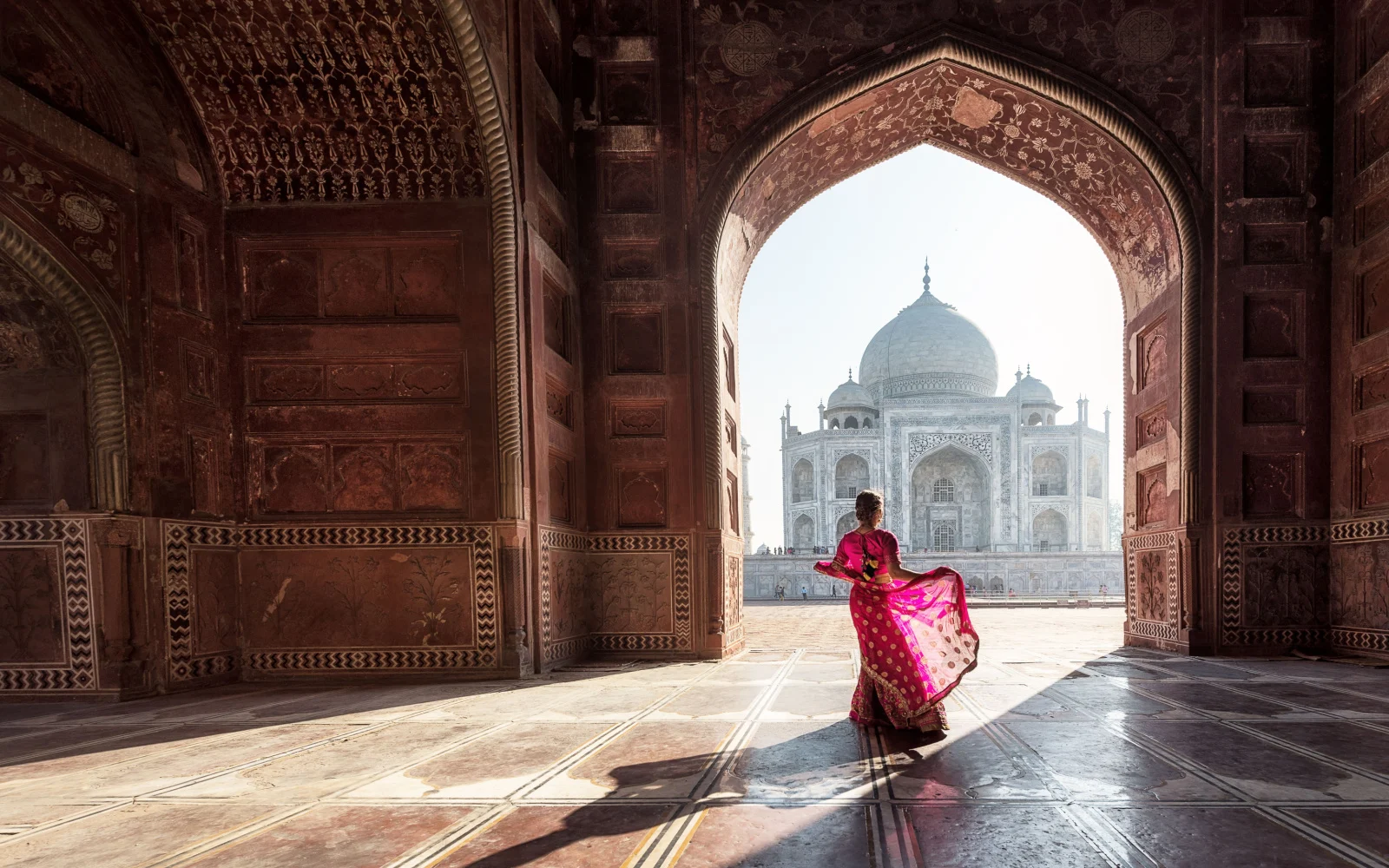What's the best time to visit India?
The best time to visit India is between November and February when the weather is mild and ideal for outdoor exploration. December offers the lowest hotel prices, making it a budget-friendly option. For those seeking fewer crowds, April is a pleasant and less busy month to experience India’s diverse culture and attractions.
The diverse landscapes, vibrant cultures, historic landmarks, and punchy, aromatic cuisine make India a fascinating place to visit year-round. But what’s the best time to visit India? Are there months you should avoid planning your trip?
India’s variety of terrain and climates means it can be cold and snowy in the Himalayas while it’s warm and wet in the western coastal plains. The fluctuations in visitor numbers to India’s most popular destinations (like the Taj Mahal, Mumbai, and Goa) make it essential to plan the right dates for your trip.
We’ll look at India’s weather, peak and off-season tourism, average accommodation prices by month, and major festivals and events to show you the best, cheapest, least busy, and worst time to visit India.
You’ll be able to plan you trip to meet your travel goals and style, whether that’s custom-tailoring your dates to the most affordable months or the mild high season, and make the most of your Indian travels.
The Overall Best Time to Visit India
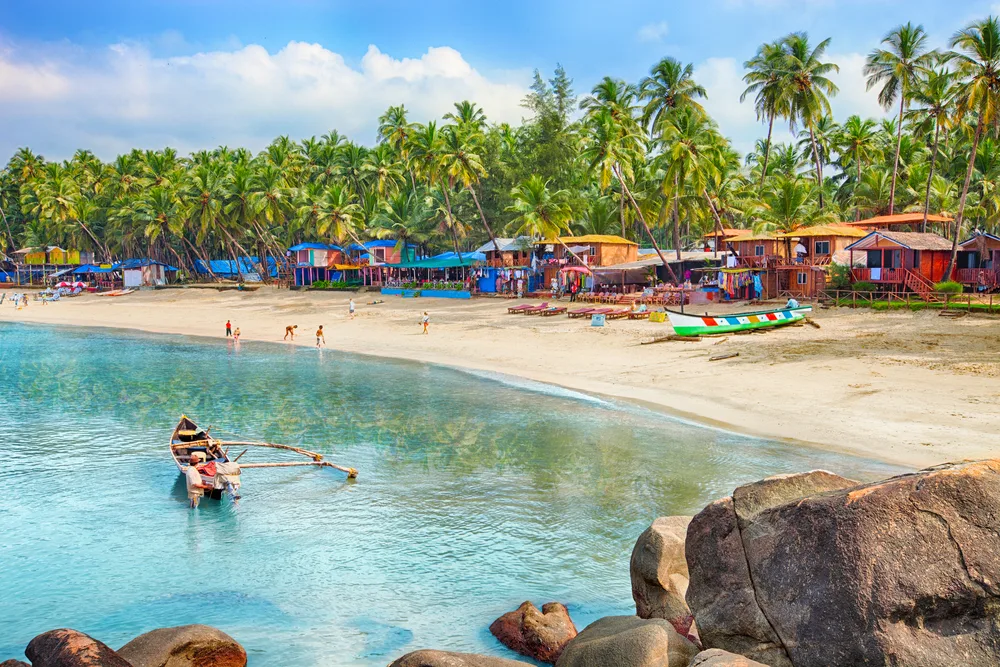
Lena Serditova/Shutterstock
The best time to visit India is between November and February when the weather is mild and warm with little rain, creating prime opportunities to explore and enjoy outdoor activities.
From November to February, most of India’s regions are experiencing a rare sync-up with warm, dry weather and temperatures that aren’t scorching hot. That makes it the best time to visit overall, no matter where you’re planning on going within the country.
Temperatures differ around the country, especially in the mountains and rainforests, but you can expect things to be warm and mild compared to summer:
- November: 80-91°F; 1-6 rainy days
- December: 71-89°F; 1-2 rainy days
- January: 68-86°F; 1-2 rainy days
- February: 74-88°F; 1-3 rainy days
Mumbai on India’s west coast tends to be 10+ degrees hotter than New Delhi in north-central India, making the cooler months of December and January better for visits to Mumbai when the weather is ideal for urban exploration and sightseeing around its temples, pagodas, museums, and national parks.
You’ll find it an excellent time to visit the Taj Mahal in Agra, or go whole-hog and do a complete Golden Triangle tour from the bustling, noisy capital, New Delhi to the Taj Mahal in Agra, ending at Jaipur, the “Pink City” filled with ornate palaces and lush parks.
It’s a good time head to a jungle lodge like Reni Pani in Satpura National Park and Tiger Reserve to see diverse wildlife and experience the wildness of India’s jungles and rainforests.
Southern India’s beaches are another great place to visit during this season, especially the tourist favorites with white sand and beach bungalows along the shore like Palolem Beach, Benaulim Beach, and Lighthouse Beach.
Here’s a look at the average nightly hotel rate during this period in Mumbai, the largest and most-visited city in India, and Kerala, one of the most popular beach destinations, according to data from Google Hotels:
- November: $164/night
- December: $48/night
- January: $87/night
- February: $163/night
These hotel rates are averages of 2-5 star accommodation prices, which range from $34 to $600+ per night. So while some months have much higher prices than others, you’ll always be able to find more affordable hotels under $100 or so, even in the peak months.
Visiting between November and February means you might be in town in time for some major festivals and cultural celebrations, like these:
- Pushkar Camel Fair (Nov.): This popular festival brings thousands of camels and goats to Pushkar, Rajasthan during the November full moon in a traditional mela, complete with cultural ceremonies and evening performances around massive bonfires
- Diwali (Oct./Nov.): Sometimes falling in November, this 5-day Hindi Festival of Lights is celebrated around India with massive fireworks shows, clay lamps and candlelight displays, feasts, and colorful decorations hung in public spaces
- Cochin Carnival (Dec.): This cultural festival in Kerala’s Fort Kochi Old Town features big parades through the streets, food stalls, and costumed performers
- Mahi Utsav (Jan.): This activity-packed event celebrates Indian culture with dance, music, spirituality and prayer, and competitions like boat races and pageants in Rajasthan
- Bharat Parv (Jan.): New Delhi hosts this government-sponsored event at the Red Fort with a massive parade, live music and dance performances, cultural ceremonies, food stalls, and more Republic Day celebrations
- Naguar Fair (Jan./Feb.): As the second-biggest fair in India, this traditional cattle fair was historically for trading, but today, the animals are colorfully decorated with village markets and fun games and competitions in Naguar, near Jaipur
- Maha Maham Festival (Feb./Mar.): A spiritual festival, also called the Holy Bath Festival, happens once every 12 years in Kumbakonam with the raising of a spiritually significant flag before locals bathe in the Mahamaham tank to cleanse themselves
If you want to experience the best India has to offer, come between November and February. December and January will likely be the cheapest months during this period. Just make sure to book your hotel and flight well in advance since things get booked up quickly during this mild time of year.
Cheapest Time to Visit India
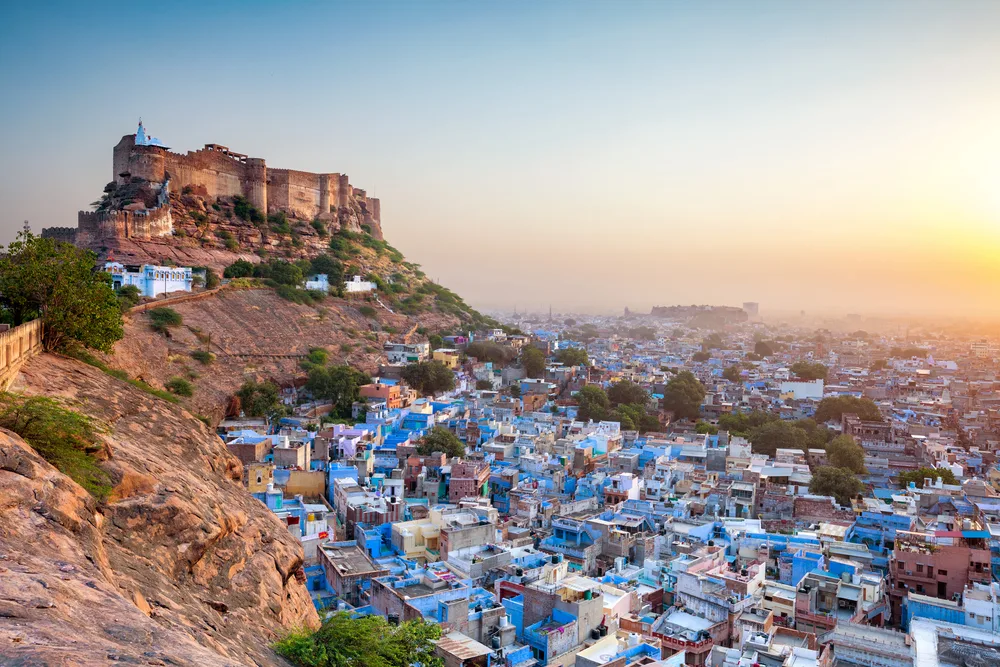
Sean Hsu/Shutterstock
The cheapest time to visit India is during December-January, March, and June. These are the months with the lowest average nightly hotel rates for a few reasons.
If you want to pay hotel prices in the double, not triple, digits, visiting during the months of December, January, March, and June are your best options. These months are when you’ll find bargains on accommodations around India, from bustling Mumbai to the pristine shores of Kerala.
So what makes these specific months the cheapest time to visit India? It’s a variety of factors, including excessive heat, torrential rain, and a lack of major festivals and events. Here’s a look at the average weather conditions across India’s major cities and destinations during these months:
- December: 71-89°F; 1-2 rainy days
- January: 68-86°F; 1-2 rainy days
- March: 85-91°F; 1-4 rainy days
- June: 84-101°F.; 7-18 rainy days
December and January are busy months for tourism and considered some of the best months to visit, so it’s fortunate that they’re also two of the cheapest months to visit. The weather is warm, mild, and dry with highs ranging from the upper 60s to the upper 80s in different regions.
March marks the end of the mild-weather period across India and sees temperatures warm into the 90s with a few more rainy days. It’s still not a bad time to visit — just a bit warmer than December and January, especially Mumbai, Kolkata, and Bengaluru.
The summer monsoon season begins in June, leading to heavy rains and widespread storms that wash out rural roads and make exploring, sightseeing, and visiting parks a real challenge. It’s also incredibly hot this month, with highs surpassing 100°F.
You know that visiting during these months is cheap, but how cheap? We’ve averaged and analyzed Google Hotels data for Mumbai and Kerala to find the average nightly rates in India this time of year:
- December: $48/night
- January: $87/night
- March: $75/night
- June: $70/night
December represents the cheapest month to visit India overall, and it’s also one of the cheapest months to fly to India, according to Skyscanner data. Oddly enough, it’s more expensive to fly to India during June, which isn’t really a great time to visit, even with the lower prices considered.
You’ll find that there are plenty of festivals and cultural events you can attend if you visit during December, January, March, or June. We’ve listed December and January events above under the Best Time to Visit section, but here’s a look at March and June events:
- Holi Festival (Feb./Mar.): A festival of color, dance, and the arrival of Spring, this annual paint-throwing event is especially celebrated in Northern India where winters are colder and happens in February or March each year
- Thar Festival (Mar.): This art and culture festival in Barmer, Rajasthan features entertainment and shows, handicrafts, and food stalls set up to encourage tourism and honor traditional culture in the Thar Desert
- Sant Guru Kabir Das Jayanti (Jun.): A celebration of the 15th-century mystic and poet Sant Kabir Jayanti and his legacy celebrated in late June Sant Kabir Jayanti is celebrated in India at the full moon in the Hindu month of Jyeshtha, between May and June
- Ratha Yatra of Puri (Jun.): A massive Hindu chariot festival celebrated in Puri as people gather in the name of the Jagannath god, recognized as one of the biggest and oldest religious festivals in the world
- Raja Sankranti (Jun.): A 3-day festival honoring Bhuma Devi, likened to Mother Earth, and Indian women in general with colorful costumes, food, prayer, and parades
December and January are by far the best and cheapest months to visit, with March taking second place and June a distant third. It’s just too rainy and hot to be enjoyable once the monsoon season rolls around, though there are lots of June festivals to check out.
Least Busy Time to Visit India
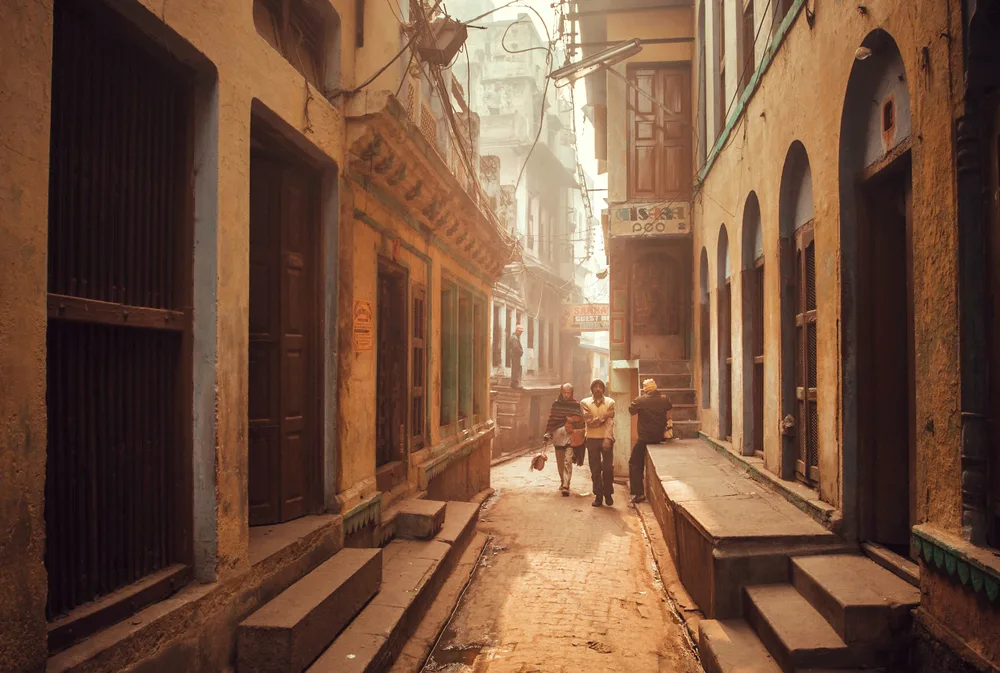
VARANASI, INDIA: Local people walking on narrow streets with tall houses in historical indian city on January 4, 2019. Varanasi urban agglomeration had population of 1,435,113/Radiokafka/Shutterstock
The least busy time to visit India is in April-May and July-August, when crowds hit their annual lows and access to tourist attractions is at its best.
June isn’t included in the least busy time to visit because it’s packed with spiritual and cultural festivals that bring lots of people to India. April, May, July, and August see the fewest visitors of all, which is great if you’re hoping for a less-crowded trip.
The weather will be your deciding factor on which month among the least busy will work best for your trip. As luck would have it, it’s pretty easy to decide which ones are better for a trip:
- April: 91-96°F; 1-6 rainy days
- May: 90-102°F; 3-11 rainy days
- July: 82-95°F; 9-23 rainy days
- August: 82-92°F; 11-22 rainy days
While April and May are hot, July and August are unbearably rainy and wet with up to 22-23 rainy days each month in the wettest regions (which includes places like Mumbai and Kolkata).
And since May sees both higher temperatures and more rainfall than April, April is our top pick for the most pleasant, least busy month to visit.
The nightly rates at hotels across India are on the higher end during these months, even more expensive than what we consider the best time to visit (November-February):
- April: $167/night
- May: $161/night
- July: $157/night
- August: $170/night
If you’re looking for events and festivals to check out while you’re here, there are plenty taking place between April-May and the much rainier July-August:
- Madhavpur Fair (Apr.): Celebration at the site of Lord Krishna and Rukmani’s marriage with a 5-day festival in Madhavpur village featuring chariots, colorful costumes, idol worship, and dancing
- Thrissur Pooram (Apr.): Held in Kerala, this light-and-decoration filled post-harvest festival celebrates regional gods with traditional dress and processions of elephants wearing costumes with colorful umbrellas
- Summer Festival (May): On Buddha Purnima, this 3-day Rajasthan festival kicks off the summer season with traditional dance performances, costumes, and competitions for locals along with food stalls
- International Flower Festival (May): Amazing arrays of blooms from orchids to trees and rhododendrons in Gangtok marks the start of summer with food stalls and classes, workshops, and lectures
- Athi Varadhar Utsav (Jul.): This festival attended by thousands happens at the Athi Varadhar Temple to honor the 10-foot tall idol of Lord Athi Varathar once every 40 years, with the next one scheduled for 2059
- Kharchi Puja (Jul./Aug.): Hindi festival in Agartala that happens in July or August to honor and worship 14 gods with music, dancing, prayer, idol processions, and colorful costumes in Tripura, India
This is your ideal time to head to the Taj Mahal without waiting in long lines or having throngs of tourists in the frame when you’re taking photos. April and May can be good times to visit the beaches in Southern India, where you can cool off from the hot sun.
In July and August, when conditions are the wettest, you’ll want to stick to indoor attractions in major cities like Mumbai or head to drier areas like Goa and Chennai beaches, sightseeing in Bengaluru, or temple visits in Madurai.
Worst Time to Visit India
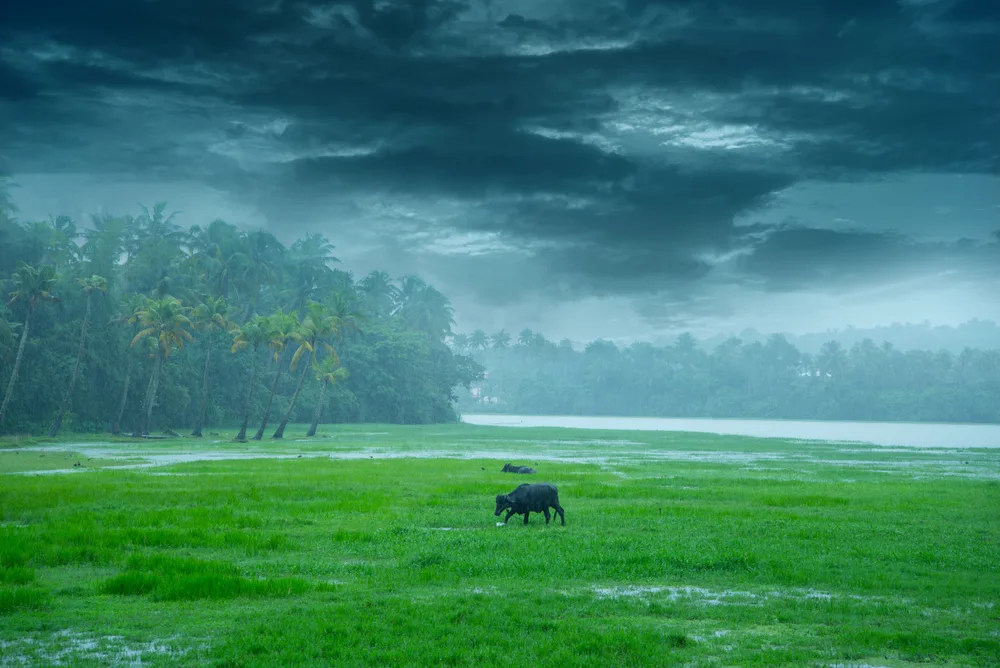
Milju Varghese/Shutterstock
The worst time to visit India is during the monsoon season from June to September. Monsoons bring heavy rainfall and cloudy skies to most of the country, making it harder to explore and enjoy.
India’s monsoon season is one of the most prominent in the world, which is great for meteorologists to study, but terrible for vacationers. Nonstop downpours can really put a damper on your visit this time of year.
It’s a shame, because the lush, warm monsoon season is beautiful in India — when it’s not raining in sheets. Here’s a look at the average temperatures and rainfall across the country this time of year:
- June: 84-101°F; 6-18 rainy days
- July: 82-95°F; 9-23 rainy days
- August: 82-94°F; 9-22 rainy days
- September: 82-93°F; 8-17 rainy days
Mumbai, the Goa state, and Kolkata are exceptionally wet, receiving the high end of rainfall totals each month this time of year. Other areas, like Bengaluru and Madurai, are drier and good places to escape the precipitation if you must travel during this time.
The only other saving grace of this time period is that you can find super-cheap hotels during the month of June, which is one of the cheapest months to visit India overall (according to Google Hotels data):
- June: $70/night
- July: $157/night
- August: $170/night
It’s a vibrant time for regional festivals and events, which are listed above in the Cheapest Time to Visit (June events) and Least Busy Time to Visit (July, August events) sections. From Sant Guru Kabir Das Jayanti in June to the Hindi Kharchi Puja spiritual festival in July/August, there’s always something going on during the monsoon season.
Still, it’s the one time of year that’s best avoided in favor of visiting during the best period from November to February.
India by Month: Climate & Activities
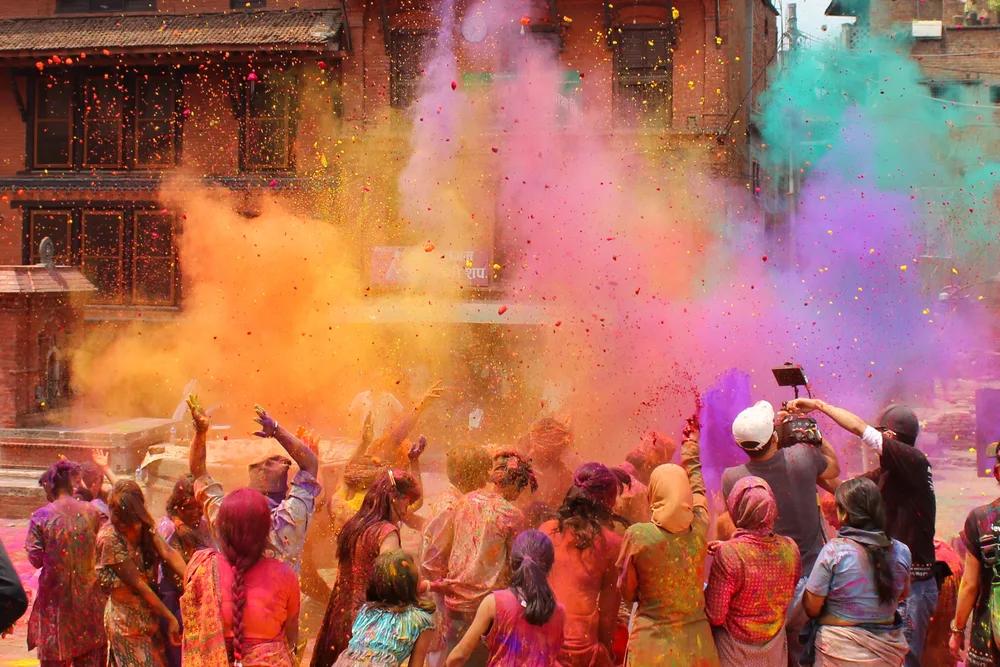
Kristin F. Ruhs/Shutterstock
If you’re not quite settled on your travel dates just yet, take a look at the average weather, events, pricing, and best places to visit each month in India.
January
Winter weather varies across India, with highs usually between 68-86°F and 1-2 rainy days during the month. January is an excellent time to explore North India, including the Golden Triangle (Delhi, Agra, and Jaipur). Visit the Taj Mahal, experience the vibrant festivals of Lohri and Pongal, and enjoy wildlife safaris in national parks like Ranthambhore.
Hotels are cheaper than usual and typically cost around $87/night on average (2-5 star accommodations, according to Google Hotels) this month.
February
Similar to January, February maintains milder temperatures between 74-88°F and sees 1-3 rainy days. Head to South India to explore Kerala’s backwaters, attend the Goa Carnival for lively celebrations near the beach, and experience the colorful Holi festival in late February or early March.
Hotels are typically priced around $163/night in February, which is a normal price for this time period around India’s major cities and natural retreats.
March
As spring begins, temperatures start to rise with highs from 85-95°F on average and 1-4 rainy days this month. March is perfect for exploring the historic temples of Khajuraho, attending the Elephant Festival in Jaipur, and enjoying the beaches of Goa before the heat intensifies.
You can expect to pay around $75/night for a 2-5 star hotel room in India during March, which is one of the last dry months as April and May start to show signs of the monsoon season.
April
April sees rising temperatures from 91-96°F with 1-6 rainy days. It’s a great time to visit the Himalayan regions like Himachal Pradesh and Uttarakhand. Experience the Baisakhi festival in Punjab, witness the Ganga Aarti in Varanasi, and explore the architectural wonders of Hampi in Karnataka.
Hotels are priced on the high end of average for India during April, at around $167/night this month. You can find cheaper rooms by looking at 2-3 star hotels, or pay a little more for a 4-5 star hotel or resort around India’s beaches and jungle lodges.
May
May is hot across most of India and begins to see signs of the coming monsoon season. Highs range from 90-102°F with 3-11 rainy days this month. Consider visiting Ladakh for its unique landscapes, exploring the hill stations of Shimla and Ooty, and participating in the Buddha Purnima celebrations in Bodh Gaya.
Expect to pay around $161/night for a 2-5 star hotel room in May, which is on the high end of average but not the highest-priced month to visit.
June
The onset of the monsoon season brings temperatures around 84-101°F with 6-18 rainy days across India. It’s wet, but it’s also just the beginning! Explore the lush greenery of Munnar in Kerala, visit the Ajanta and Ellora Caves in Maharashtra, and experience the Rath Yatra in Puri, Odisha.
June is wet, but also one of the cheapest months to visit India with rooms costing around $70/night on average (this includes 2-5 star hotels and resorts found with Google Hotels data).
July
July is the height of monsoon season in many parts of India, seeing highs from 82-95°F and a staggering 9-23 rainy days. Head to the western state of Goa, where the rain adds a romantic touch to the beaches. Consider exploring the scenic landscapes of Meghalaya in the northeastern region.
With these wet conditions, you’d expect lower hotel prices, but July is still relatively high for the country with average rates around $157/night. It’s one of the worst months to visit.
August
Monsoon continues in August with temperatures hitting highs around 82-94°F and an incredible 9-22 rainy days this month. Experience the traditional boat races during Onam in Kerala, visit the Valley of Flowers in Uttarakhand, and explore the Western Ghats for lush greenery and waterfalls.
You might pay somewhere around $170/night for a hotel room in August, which is the highest average nightly rate in India throughout the year. Since it’s so wet and expensive, it’s one of the worst months to go.
September
Monsoon begins to retreat in some areas as the weather cools off slightly, around 82-93°F, with 8-17 rainy days. September is ideal for visiting Rajasthan, exploring the historic city of Jodhpur, and experiencing the Ganesh Chaturthi festivities in Mumbai.
September’s average hotel price in India is around $163/night, according to Google Hotels data from Mumbai and the Kerala beach region, and offers fair weather with more opportunities to explore than the height of the monsoon season.
October
Post-monsoon, October sees mostly pleasant weather across India. Expect 2-14 rainy days this month, depending on the region, and highs between 82-90°F. Attend the Navratri celebrations in Gujarat, celebrate Diwali, explore the desert landscapes of Jaisalmer, and visit the architectural wonders of Fatehpur Sikri in Uttar Pradesh.
October hotel prices are around $156/night, which is a welcome reprieve from the higher prices during the wet monsoon season. It’s not the cheapest or best time to visit, but weather conditions are good and temperatures are mild.
November
Fall temperatures range from mild to warm, hovering between 80-91°F with 1-6 rainy days this month. November is perfect for cultural experiences in Varanasi, attending the Pushkar Camel Fair in Rajasthan, and exploring the UNESCO-listed Western Ghats in Maharashtra.
You can expect to shell out around $164/night for a hotel room in November, which is one of the best months to visit India overall thanks to its mild weather, dry conditions, and ample options for things to do.
December
Winter returns with “cool” temperatures from 71-89°F across the country and just 1-2 rainy days. December is ideal for beach vacations in Goa, exploring the tea plantations in Darjeeling, and experiencing Christmas celebrations in cities like Kolkata and Mumbai. The Rann Utsav in Gujarat is also a must-attend event.
You can find hotel rooms for around $48/night this month, making it the cheapest month to visit India overall and one of our favorite times to experience the diverse landscapes of this country.
Frequently Asked Questions
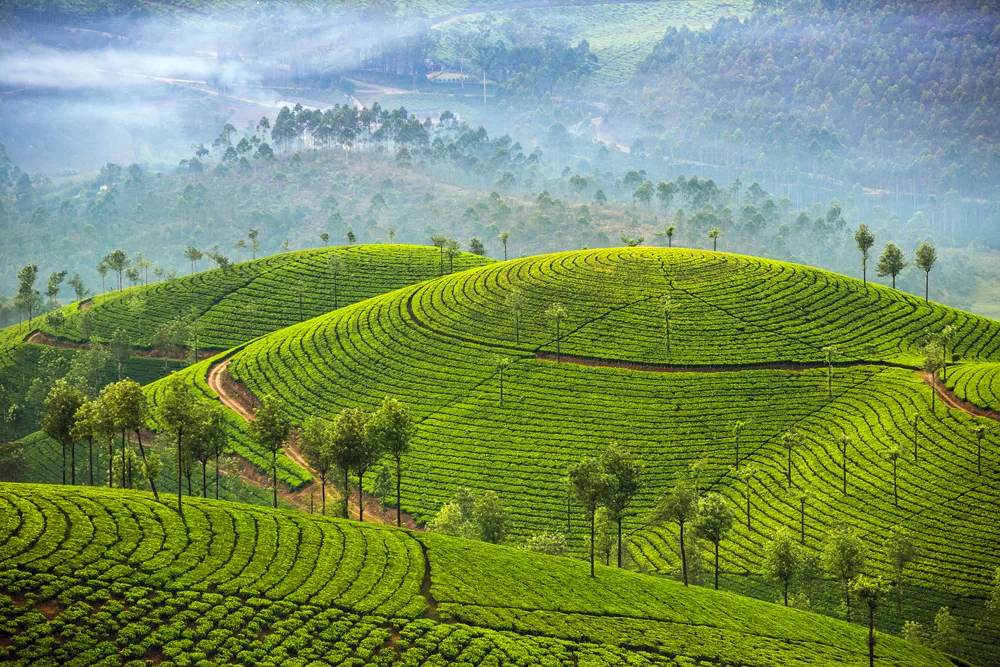
Mazur Travel/Shutterstock
Check out the most frequently asked questions about the best time to visit India below. You’ll learn more info to help you plan the perfect trip!
Which is the busy season for India?
November to April is the busy season for much of India, including its beach destinations, cities like New Delhi and Mumbai, and major tourist attractions like the Taj Mahal in Agra. The busy peak season is part of the dry season with warm temperatures that get hot around April.
The best part of the busy season to visit India is between November and February, which have the best balance of good, dry weather and milder temperatures.
Which months do Indians travel the most?
The months of March, April, and May are the busiest travel months for Indians, according to a 2023 case study on Indian travel from BookMyForex.
These months are just ahead of the rainy monsoon season, so people may travel to enjoy the nice weather before things get wet and stormy.
What is the best first time trip to India?
The best first time trip to India is touring the Golden Triangle, where you’ll get a taste of the true culture, architectural wonders, diverse landscapes, and regional cuisines in India. The Golden Triangle includes New Delhi (the capital), Agra (Taj Mahal), and Jaipur (lots of palaces and historic architecture).
By touring the Golden Triangle, you’ll get to explore some of India’s most famous monuments and cities, immerse yourself in the culture with different styles of Indian food and customs, and see a good representation of the country as a whole.
What months are cool in India?
India’s coolest months are January and December, which see highs 68-89°F in different parts of the country. New Delhi, Kolkata, and Bengaluru are some of the cooler parts of India this time of year.
It doesn’t get much cooler than about 47°F in India, and some areas don’t see lows below the 60s and 70s. India is a warm to hot country year-round, but January and December offer a nice break from the heat.
When not to visit India?
The monsoon season is not a good time to visit India, especially during its peak from June to August. These months see as many as 23 rainy days in a 30-day period with nearly nonstop downpours that make exploring the country a lot more challenging.
So, When Should You Visit India?
The overall best time to visit India is between November and February, owing to the prime, dry weather conditions that are ideal for exploring temples, spotting wildlife in jungles, visiting beaches in the south, or sightseeing in cities like Mumbai and New Delhi.
If you want to save some money on your trip, plan to visit during December, January, March, or June. These are the cheapest months to visit the country, and December sees the lowest pricing on accommodations of any month (around $48/night on average).
Sidestep the crowds by coming during April, May, July, or August, when tourism dwindles ahead of and during the wet monsoon season. June, July, and August mark the worst time to visit India with as many as 23 rainy days each month!
India is a warm, diverse, colorful country that holds tight to its vibrant culture and customs to make your travels especially interesting. This is a trip you’ll never forget — even if you end up traveling during the height of the monsoon season!



